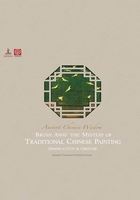
明皇幸蜀图 (míng huáng xìng shǔ tú)
Emperor Xuanzong’s Journey to Shu

“Emperor Xuanzong’s Journey to Shu” has long been deemed the best example of the Green and Blue Landscape genre in China. The silk has turned yellowish, but one can still discern the bright green and blue, which make it very different from monochrome ink landscape paintings in Chinese history.
Artist: Li Zhaodao (675-741 AD)
Year: Tang Dynasty (618-907 AD)
Type: Ink and color on silk
Dimensions: 55.9 × 81 cm
Location: Palace Museum, Taipei
Laurence C. S. Sickman (1907-1988), an American art historian and Sinologist, once said that landscape painting has been “China’s greatest contribution to the art of the world.”
However, landscapes did not evolve into an independent genre of art in China until the sixth and seventh centuries. They were initially only used as backgrounds for people who were traveling, farming or hunting and for animals roaming in the wild.
The emergence of landscape painting as an important artistic genre in the country at that time reflected Chinese literati’s longing to escape the worldly life and to reconnect with the nature. Actually, not only painters, many poets and scholars then also harbored the aspiration of withdrawing into the natural world and this trend had influenced many of their works.
Also, it could be attributed to the spread of Taoism in the country during that period of time. The indigenous religion advocates the universal harmony through the unity of the outer natural world with human’s inner spirit.
During the prosperous Tang Dynasty (618-907 AD), landscapes had gradually established a firm foothold among painters and artists painted landscapes in a full blaze of color. This style was later labeled the Green and Blue Landscape genre. Such artworks are known for the use of bright copper green and cobalt blue. Some paintings also feature etched golden outlines to highlight the mountains and rocks, adding a little shine to the piece.
Most art historians believe Li Sixun (651-716 AD) and his son Li Zhaodao (675-741 AD) were among the founders of the Green and Blue Landscape genre.
Li Sixun was a distant relative of the first emperor of the Tang Dynasty. He was not only a great painter, but also a renowned military leader, once holding the title of Great General of the Military Guard.
According to historical records, Li was extremely good at painting landscapes, buildings, Buddhist themes, flowers and birds. He applied bold and bright green and blue in his landscape paintings and defined mountains and rocks with gold outlines. Unfortunately, most of his artworks have been lost over the centuries.
His son, Li Zhaodao, was also an acclaimed painter known for his consummate skills in the Green and Blue Landscape genre. Like his father, he was also a government official and although he had never reached the rank of general, he was known as Great General Li the Junior, which put him on the same level of his father.

➊
Despite the use of bright colors, this painting was mainly created using the traditional Chinese technique of “line drawing.”
One of Li Zhaodao’s paintings, “Emperor Xuanzong’s Journey to Shu,” has long been deemed the best example of the Green and Blue Landscape genre. Shu is the ancient name of Sichuan, a province in southwest China known for its precipitous mountains and rocky paths.
The 55.9 × 81 cm ink and color on silk scroll is dominated by tall, steep green and blue mountains with white clouds floating near the peaks. Close to the bottom right corner of the painting an entourage is traveling along a winding, bumpy road.
The scene depicts Emperor Xuanzong’s flight to the Shu area to seek refuge after he abandoned the Tang capital, Chang’an (now Xi’an, capital city of Shaanxi Province) during a revolt launched by disgruntled General An Lushan.
In the painting, the emperor is seen dressed in a red robe and riding a black horse.
Despite the use of bright colors, this painting was mainly created using the traditional Chinese technique of “line drawing.” Other typical Chinese landscape painting methods like cunca or dry brush rubbing and pointillism had not been introduced at that time.
This painting, now in the collection of the Palace Museum in Taipei, is usually attributed to Li Zhaodao.

➋
In the lower right corner, the emperor is seen dressed in a red robe and riding a horse. The painting depicts Emperor Xuanzong’s flight to the Shu area (today’s Sichuan Province) to seek refuge after he abandoned the Tang capital Chang’an (today’s Xi’an City) during a revolt. The artist deliberately made the figures small to give a sense of scale to the towering peaks in the background.
However, many scholars and art critics say it’s not the original, but a remake produced during the Song Dynasty (960-1297). Nevertheless, they all concede this piece provides important clues to the Green and Blue Landscape paintings created by Li Sixun and his son more than 1,300 years ago.